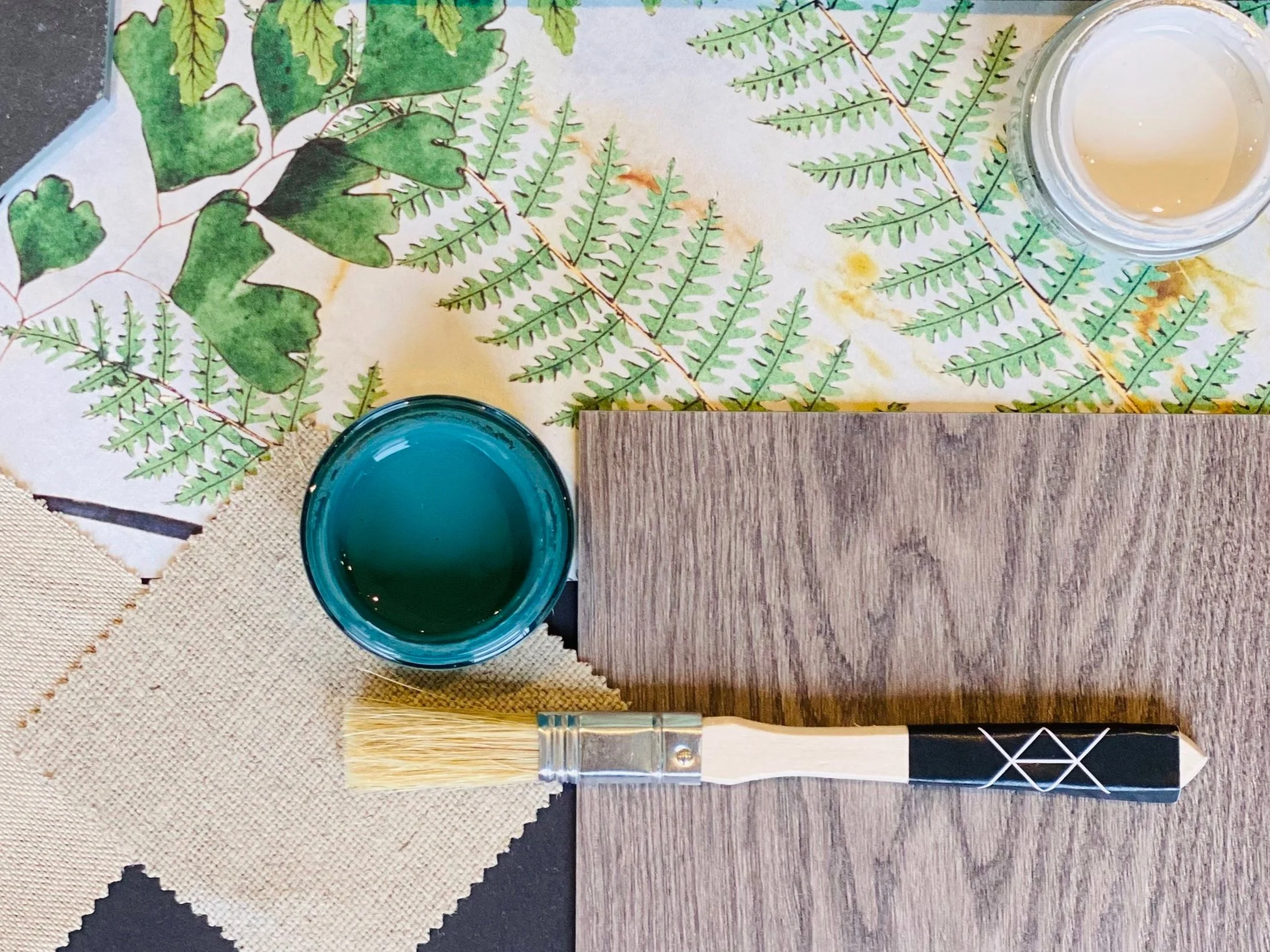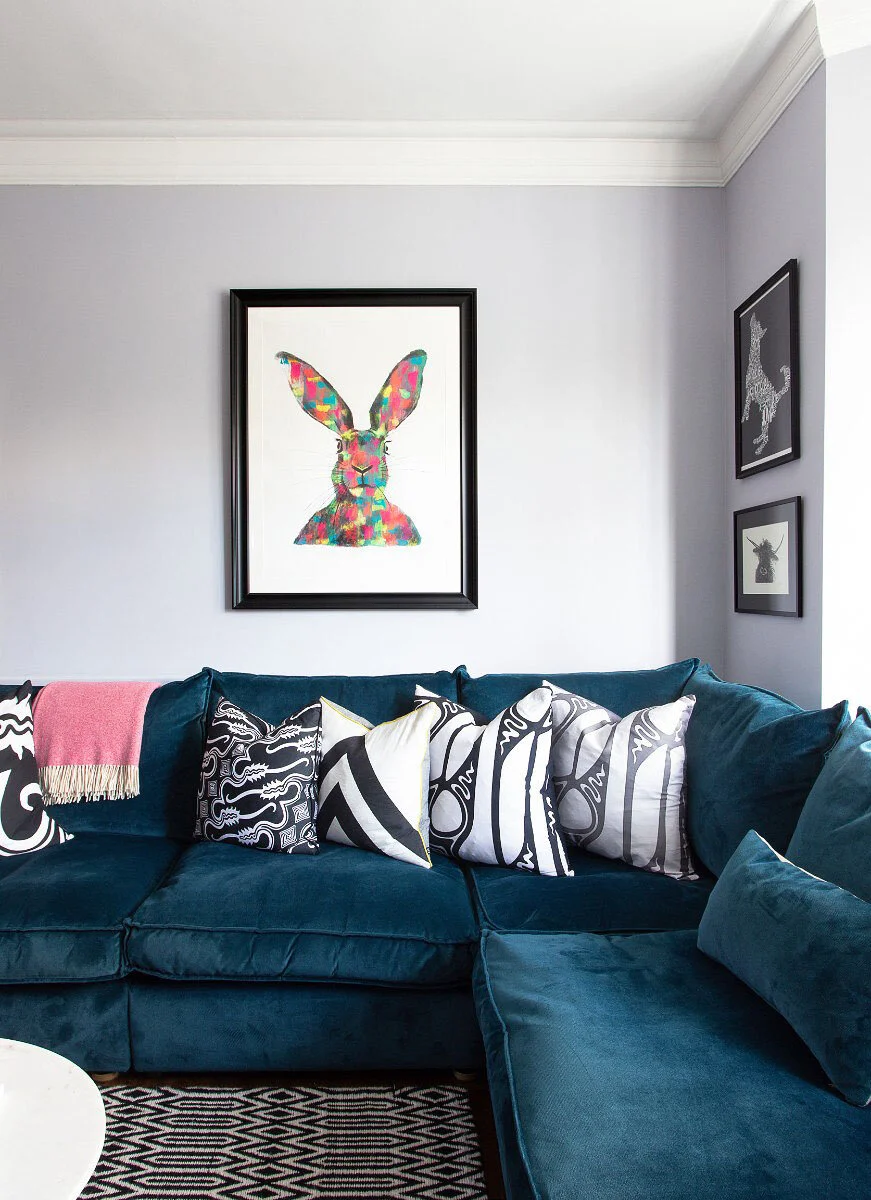Bring the outdoors in - Biophilic Design - A practice for wellbeing
Biophilic design, the practice of incorporating elements of nature into the built environment, has gained significant popularity in recent years. This innovative approach harmoniously blends the world of architecture and interior design with the power of nature, resulting in spaces that promote physical well-being, enhance productivity, and create a sense of tranquility.
Central to biophilic design is the understanding that humans have an innate connection to nature. As urbanization continues to rise and people spend more time indoors, this connection becomes increasingly crucial. By integrating elements like natural light, greenery, water features, and natural materials, designers can create spaces that not only look beautiful but also serve as sanctuaries for the human psyche.
One fundamental aspect of biophilic design is the utilization of natural light. Maximizing the use of daylight not only reduces energy consumption but also provides occupants with the ever-changing, dynamic qualities of natural lighting. Large, strategically placed windows, skylights, and lightwells allow for the penetration of sunlight deep into the interior, creating vibrant and uplifting spaces. This connection to the outdoors through light fosters a greater sense of connectedness to the surrounding environment.
Greenery plays a vital role in biophilic design, as it connects us with nature through the inclusion of plants, living walls, and even indoor gardens. Not only do plants purify the air, but they also provide visual stimulation and a calming effect. The presence of greenery has been proven to reduce stress levels, boost creativity, and enhance overall cognitive function. Incorporating plant life into interior spaces ensures a sense of freshness and vitality, bringing a touch of nature's serenity indoors.
Water features are another key element of biophilic design. The soothing sound and visual presence of water create a calming atmosphere that helps to reduce anxiety and promote relaxation. The incorporation of elements such as indoor waterfalls, fountains, or ponds can transform any space into a peaceful retreat. Water acts as a natural separator, providing privacy while simultaneously connecting different areas, enhancing the overall flow and harmony of the space.
Using natural materials is essential in biophilic design as they evoke a connection to the earth. Wood, stone, clay, and other organic materials bring a sense of warmth and authenticity to interior spaces. Not only are they aesthetically pleasing, but they also contribute to the overall well-being of occupants by improving indoor air quality, sense of self and calm that only nature can instil.
Transformative Power of Colour
Colour has an incredible ability to uplift, inspire, and transform the atmosphere of a space. From the soothing hues of blue to the vibrancy of red, the careful selection and application of colour can have a profound impact on the overall aesthetic and mood of an interior. Whether it's a residential abode, a commercial space, or even a public area, the transformative power of colour can create a truly immersive and captivating experience.
Colour has an incredible ability to uplift, inspire, and transform the atmosphere of a space. From the soothing hues of blue to the vibrancy of red, the careful selection and application of colour can have a profound impact on the overall aesthetic and mood of an interior. Whether it's a residential abode, a commercial space, or even a public area, the transformative power of colour can create a truly immersive and captivating experience.
One of the most noticeable effects of colour in interiors is its ability to influence emotions. Certain colours can evoke a sense of calm and tranquility, while others can ignite passion and energy. For instance, a light and airy room painted in soothing pastel tones can instantly create a serene and peaceful sanctuary. On the other hand, a vibrant red accent wall in a dining area can stimulate appetite and create a lively and stimulating atmosphere. Colour has the power to communicate messages and evoke specific emotional responses, allowing designers to curate desired experiences for those who occupy the space.
Furthermore, the strategic use of colour can also enhance the perceived size and functionality of a room. Lighter colours tend to make a space feel more spacious and open, while darker shades can create a sense of intimacy and coziness. In small rooms, the use of pale hues on walls and furniture can visually expand the boundaries and make the area feel more expansive. Contrarily, in larger spaces, the clever application of darker colours on select walls or features can create a sense of depth and comfort. By understanding the principles of colour psychology and spatial perception, designers can manipulate the visual aspects of a room, transforming its dimensions to suit intended purposes.
Additionally, colour has the power to showcase individuality and personal style. A well-chosen and thoughtfully executed colour palette can be a reflection of the occupant's taste and personality, making a space feel truly unique and customized. Whether it's a bold and dramatic combination or a harmonious blend of complementary shades, the right use of colour can impart a distinct character and make a space feel authentic and welcoming. By carefully considering the desires and preferences of the client, designers can select colours that resonate with their personality and create an environment that truly feels like home.
Essentially, the transformative power of colour in interiors is undeniable. From influencing emotions to altering perceptions and showcasing individuality, colour plays a pivotal role in crafting a memorable and impactful interior design. By harnessing the communicative and sensory properties of colour, designers can create truly effective and beautiful design that does good.
The Rise of the Home Office
In recent years, the home office has experienced an unprecedented rise in popularity. Driven by advancements in technology and changes in work culture, more and more individuals are transitioning from traditional office spaces to the comfort and convenience of their own homes. With this shift, interior design professionals have been challenged to create functional and aesthetically pleasing workspaces within the confines of residential properties.
In recent years, the home office has experienced an unprecedented rise in popularity. Driven by advancements in technology and changes in work culture, more and more individuals are transitioning from traditional office spaces to the comfort and convenience of their own homes. With this shift, interior design professionals have been challenged to create functional and aesthetically pleasing workspaces within the confines of residential properties.
One of the key factors fueling the rise of the home office is the increasing availability of remote work opportunities. As companies recognise the benefits of a flexible work environment and the positive impact it can have on productivity and work-life balance, the concept of the traditional office is evolving. No longer confined to a physical location, employees now have the freedom to work from anywhere, and many are choosing to work from the comfort of their own homes.
The transformation of the home office has also been driven by advancements in technology. High-speed internet connections, sophisticated digital tools, and video platforms have made it easier than ever to communicate and collaborate remotely. This accessibility has made the need for a dedicated workspace within the home even more essential. Which is why designing a functional home office that caters to the specific needs of remote work has become a priority for many homeowners.
When creating a home office, it is crucial to strike a balance between functionality, comfort, and style. Ergonomics plays a vital role as individuals spend long hours seated at their desks. Adjustable chairs, standing desks, and proper lighting are essential elements that contribute to a healthy and productive work environment. Incorporating natural light into the design can uplift the mood and create a calming atmosphere, reducing stress and enhancing creativity.
To maximise productivity and minimise distractions, it is important for a home office to be a separate and dedicated space within the house, where possible and where not possible this can be achieved through thoughtful interior design choices such as using room dividers or transforming an underutilaized room into a productivity hub. By creating physical boundaries, individuals are able to mentally transition into work mode and establish a clear separation between their personal and professional lives.
Furthermore, incorporating personalized elements into the home office design can enhance motivation and inspiration. Artwork, plants, and personal mementos can add a touch of personality to the space, making it feel more inviting and stimulating. Purposeful storage solutions, such as built-in shelves or storage are also key elements.
The Transformative Power of Art
In a world filled with ever-evolving technology, it’s tempting to overlook the importance of art in our homes. However, art possesses a profound ability to enrich our lives and create a sense of harmony within our living spaces. Not merely an extravagant luxury, art is
In a world filled with ever-evolving technology, it’s tempting to overlook the importance of art in our homes. However, art possesses a profound ability to enrich our lives and create a sense of harmony within our living spaces. Not merely an extravagant luxury, art is an essential element that can breathe life into the walls of our homes, transforming them into personal sanctuaries of self-expression and inspiration.
First and foremost, art holds the key to unlocking our emotions and igniting our imagination. A carefully chosen piece of art can evoke a range of feelings, from tranquility to excitement or even nostalgia, different to all who view it. Imagine walking into your living room after a long day at work, only to be greeted by a vibrant painting that instantly lifts your spirits and takes you to a place of serenity. Art has an unparalleled ability to awaken our senses, elevate our mood, and infuse our daily lives with a sense of wonder. This is why it is always a pivotal aspect of our interior design process.
Moreover, art possesses the remarkable ability to reflect our individuality and showcase our personal taste. Our homes are extensions of ourselves – they tell our stories, represent our values, and make us feel truly at home. By carefully curating a collection of art, we transform our living spaces into a visual autobiography. It’s an opportunity to display pieces that resonate with our personalities while celebrating the diverse and vibrant world of creative expression.
Art also enhances our cognitive abilities and fosters a sense of intellectual stimulation. Surrounding ourselves with thought-provoking artworks encourages curiosity, critical thinking, and open-mindedness. Art challenges us to interpret, analyze, and appreciate the narratives and symbolism embedded within each piece. Moreover, studies have shown that exposure to art can improve focus, memory, and problem-solving skills, enhancing our overall cognitive well-being. By integrating art into our homes, we create an environment conducive to intellectual growth and creative inspiration.
Furthermore, art can serve as a bridge between generations and cultures, fostering a sense of inclusivity and diversity within our homes, something we love. Art transcends language barriers, cultural differences, and even time itself. By incorporating art from various periods and cultures, we encourage dialogue and an appreciation for the vast array of human experiences. Through art, we can create a unifying space that celebrates our shared humanity, while simultaneously honoring our unique backgrounds and perspectives.
Finally, art enriches our visual environment, making our homes more aesthetically pleasing and nurturing our sense of beauty.
HowTo - Photograph Your Space
In our series of Handy HowTo’s this article covers tops tips on how to best photograph your interiors without hiring a professional. Whether it is pre-project photos showing the space at it’s most basic or finished project images capturing the interiors at their best.
Do you often find that you look at a room, say you’re visiting a beautiful hotel, or you’ve just revamped your home, and you’re blown away (or at least pretty chuffed), by the interior you are faced with. So you lift your camera and snap away, only to be rather deflated by how small, unimpressive or totally different in colour the photo of this space looks once held motionlessly in a snapshot?
This is a very common issue, in capturing many aspects of life but one that is particularly problematic when capturing interiors specifically. It’s relevant to estate agency images (you know how often house details can be misconceiving), or when trying to share a piece of great interior design.
Simply, getting good photos that truly capture your interiors is not always as easy as it looks. There is a reason there are professional photographers that specialise in Interiors as it takes a certain skill and specific approach.
Yes of course there is also a lot of emphasis on editing and the pictures you see of beautiful and inspiring interiors in household magazines are all professionally shot (a professional photographer I am most definitely not). However, there are a few tips that don’t involve an expensive camera or photographic education, when applied can seriously improve your interior photography.
These tips aren’t only for capturing finished projects but are highly useful for obtaining the best photos for showing the space to be worked on when kicking off a design project. Whether this is simply for your own records, like a before and after, or you are using our HowtoHome service, and need to provide some images of the space you are wanting designed. The better the images, the more accurate the finished design will be to your individual space and the more impressive the comparison will be.
Top Tips:
Natural light is pivotal. Light bulbs cast bad shadows and the camera does not have the capability to interpret the artificial light for what it is (as our eyes see it).
Overcast days are actually the best for capturing interiors. Woohoo! that’s a relief in the UK.
Straight lines are king. Basically keep your verticals (i.e. door frames etc) vertical and your horizontals exactly that, horizontal.
Use a tripod if you can so that your images are level and not blurred (more important for images of finished projects).
For capturing: ‘Pre-project’ spaces to be designed - de-clutter and keep the area as open as possible, removing as many items you no longer want included in the new design as possible.
For capturing: 'Completed-project’ spaces - staging is key! Remove all items that aren’t purposeful to your overall aesthetic, making sure there are no used cups and plates lying around for example. Remove and out out of sight any hanging or trailing electrical cables etc.
Creating space - this is the second most pivotal aspect of interiors photography and often one of the hardest. Don’t be afraid to move furniture to suit the composition of the photograph. Even if it wouldn’t work in reality it may look better on the image. Take shots from outside of the space in through the door, at that perfect point where the doorframe isn’t in view. This helps give aspect.
Wide angle - if you have access to a wide angle setting on your phone (0.5 setting on the iPhone 11 Pro) or on your camera, then great, but DON’T abuse it! If you push too wide an angle to capture a room you also risk distorting the actual space and presenting an unrealistic snapshot. Keep it mid range and take multiples instead of trying to get a whole room in one image.
Get up close - it’s all in the detail. While it is important to have an overview of the room don’t forget to get close-ups of notable, well designed or aesthetically important details. These images can work wonderfully to show depth of field, especially if you are able to use settings that blur the background and focus on the detail you are wanting to highlight.
On a camera shoot on RAW setting.
Finally, edit, edit, edit - a seemingly dull picture can be effectively edited to brighten, increase exposure and up the contrast. The main aspects to tweak aside the above are; highlights, shadows and noise reduction.
Most mobile phones have fantastic cameras and editing tools, so go forth and experiment!
Let’s be honest most of us are not taking interior magazine quality images, but that’s no reason not to achieve the best results you can with little effort.
Good luck and have fun.










